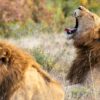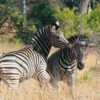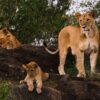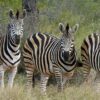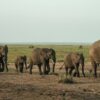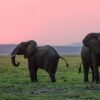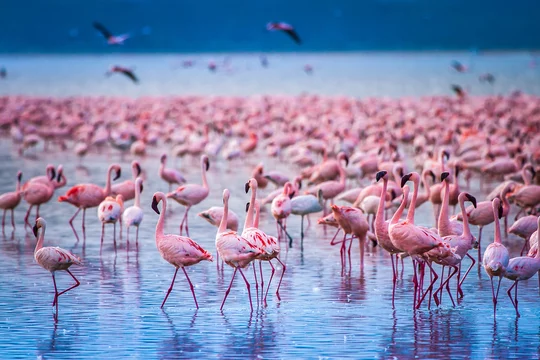Interesting Facts About Lake Nakuru National Park You Need to Know
Have you ever seen a lake that looks like it’s been painted pink? Get ready to explore one of Kenya’s most stunning treasures! This post will cover all the interesting facts about Lake Nakuru National Park you need to know. We’re diving deep into everything from its famous pink residents to its role as a critical rhino sanctuary. Whether you’re planning a Kenya safari or are just curious, you’re in the right place. Let’s get started on this adventure!
Introduction to Lake Nakuru National Park
Welcome to one of the most picturesque Kenya national parks! Lake Nakuru National Park is a gem nestled on the floor of the Great Rift Valley. It’s not just a pretty place; it’s a protected area with enormous ecological importance. What makes it so special? Well, it’s a haven for wildlife and a paradise for bird lovers, famous for the vast flocks of flamingos that grace its shores.
This park is more than just a lake. It’s a diverse landscape of woodlands, grasslands, and rocky cliffs. It offers a complete safari experience in a compact and accessible package. It’s one of the top things about Lake Nakuru National Park you need to know in Kenya.
The Unique Location and Geography of Lake Nakuru
Ever wondered how big is Lake Nakuru National Park? The park covers an area of about 188 square kilometers, centered around the lake itself. It sits within the Great Rift Valley, a massive trench that runs down the spine of Africa. This unique location gives it a special alkaline lake, which is the secret behind its most famous attraction.
The park’s geography is surprisingly varied. You’ll find everything from marshy swamps and acacia woodlands to rocky escarpments. This diversity supports an incredible range of flora and fauna, making it a critical ecosystem. The park is fully fenced, which helps protect its precious wildlife from outside threats.
Pro Tip: Grab a Lake Nakuru National Park Map at the entrance. It will help you navigate the park’s circuits and find all the best viewpoints and picnic spots.
The Famous Flamingos of Lake Nakuru
Let’s talk about the stars of the show: the flamingos in Lake Nakuru! For years, this lake was famous for hosting millions of pink flamingos, creating a breathtaking spectacle. But why do they love this place so much?
Why is the lake a haven for flamingos?
The lake is a shallow, alkaline soda lake. This means it has a high concentration of carbonates, creating the perfect conditions for a specific type of blue-green algae to thrive. And guess what? This algae is the main course on the flamingo menu.
What do flamingos eat?
What do flamingos eat? They feed on the abundant blue-green algae (spirulina) in the lake. Using their specialized beaks, they filter out the algae and tiny crustaceans from the water. This diet is also the answer to another popular question: why are flamingos pink? The pigments in the algae and crustaceans, called carotenoids, are what give the flamingos their brilliant pink color. Without this food, they would be a dull grey! Pretty cool, right?
Pro Tip: While flamingo numbers have fluctuated due to changing water levels, they are still a magnificent sight. For the best Lake Nakuru National Park Photos of flamingos, visit during the dry seasons when the water is more concentrated.
Diverse Wildlife Beyond the Flamingos
While the flamingos might steal the spotlight, the wildlife in Lake Nakuru is incredibly diverse. The park is a sanctuary for some of Africa’s most iconic animals. You won’t find elephants here, but the park is home to four of the “Big Five”: lions, leopards, rhinos, and buffaloes.
You’ll also see graceful Rothschild’s giraffes, which are a rare subspecies. Herds of zebras, shaggy waterbucks, and impalas are common sights. Keep your eyes peeled for predators like lions, sometimes seen lounging in the trees, and the more elusive leopard. The park’s varied habitats mean there’s always something new to see around every corner.
Pro Tip: The best times for game viewing are early in the morning and late in the afternoon when animals are most active.
Birdwatcher’s Paradise: Over 450 Bird Species
Think this park is just about flamingos? Think again! Lake Nakuru is a world-renowned destination for birdwatching in Kenya. It boasts over 450 species of birds. This includes large flocks of pelicans, cormorants, herons, and storks.
You might also spot the African fish eagle, Goliath heron, pied kingfisher, and the majestic Verreaux’s eagle. Whether you’re a seasoned birder or a curious beginner, the sheer number and variety of birds will leave you in awe. It’s a symphony of sounds and colors.
Pro Tip: Bring a good pair of binoculars and a bird identification guide to make the most of your birdwatching experience.
The First Rhino Sanctuary in Kenya
Here’s a powerful fact: Lake Nakuru was established as the first rhino sanctuary Kenya. The park plays a crucial role in the conservation of both black and white rhinos. Thanks to its protective fence and dedicated anti-poaching patrols, it has become one of the most successful rhino sanctuaries in the country.
You have a very high chance of spotting these magnificent, prehistoric-looking creatures here. Seeing a rhino up close in its natural habitat is a truly humbling experience and one of the main Lake Nakuru attractions. This conservation success story is a testament to Kenya’s commitment to protecting its wildlife heritage.
Pro Tip: Rhinos are often found in the bushy grasslands. Be patient and drive slowly; your guide will help you spot them.
Scenic Attractions: Baboon Cliff, Lion Hill, and Makalia Falls
Beyond the wildlife, the park’s landscape is an attraction in itself. There are several viewpoints that offer stunning panoramic views.
Must-visit viewpoints and natural landmarks
- Baboon Cliff: This is one of the most popular viewpoints. As the name suggests, you’ll find plenty of baboons here! It offers a breathtaking view over the lake.
- Lion Hill: Another fantastic spot for sweeping views of the lake and the surrounding rift valley. It’s a great place for a picnic.
- Makalia Falls: Located in the southern part of the park, this beautiful waterfall is a hidden gem. It’s a perfect spot for a quiet picnic and a short hike.
Pro Tip: The light is best for photography at these viewpoints during the early morning or late afternoon.
Cultural Insights: The Maasai Connection
The area around Lake Nakuru is historically home to the Maasai people. While the park itself is a protected area, you can visit local Maasai communities just outside its borders. This offers a chance to learn about their rich culture, traditions, and semi-nomadic way of life. It’s a wonderful opportunity to connect with the local people and gain a deeper understanding of the region.
Pro Tip: When visiting a Maasai village, be respectful of their customs. Always ask for permission before taking photographs.
Best Time to Visit Lake Nakuru National Park
So, what is the best time to visit Lake Nakuru? The great news is that wildlife viewing is excellent year-round! However, there are some seasonal highlights.
The dry seasons, from June to October and January to February, are generally considered the best. During these months, the grass is shorter, making animals easier to spot. The water levels are also lower, concentrating the flamingos along the shoreline. The rainy seasons (April-May and November) bring lush green landscapes and fewer crowds, but roads can be muddy.
Pro Tip: If your main goal is to see flamingos, plan your trip during the dry season for the highest concentrations.
How to Get to Lake Nakuru National Park
Getting to the park is relatively easy. It’s located about 160 km northwest of Nairobi.
Travel options, entry gates, and tips
- By Road: The drive from Nairobi takes about 3-4 hours. You can hire a car or join a Lake Nakuru National park bus tour. The main road is tarmacked and in good condition.
- Entry Gates: There are three main Lake Nakuru National Park gates: the Main Gate (near Nakuru town), the Lanet Gate (off the Nairobi-Nakuru highway), and the Nderit Gate (for those coming from the Masai Mara).
- Park Fees: The Lake Nakuru National Park entrance fee varies for citizens, residents, and non-residents. Keep an eye on the Lake Nakuru National park entrance fee 2025 as rates can change. The lake nakuru fees per person are paid per day.
Pro Tip: To avoid traffic in Nakuru town, use the Lanet Gate if you are driving from Nairobi.
Activities to Enjoy in the Park
There are many things to do in Lake Nakuru to fill your day.
Game drives, birdwatching, and more
- Game Drives: This is the primary activity. The Lake Nakuru game drive charges are usually included in your safari package.
- Birdwatching: As mentioned, it’s a bird lover’s dream.
- Hiking: You can enjoy guided walks around Makalia Falls.
- Picnics: There are several beautiful picnic spots like Baboon Cliff and Lion Hill.
- Photography: The scenic beauty and abundant wildlife make it a photographer’s paradise.
Pro Tip: Consider combining your Lake Nakuru safari with a trip to nearby Lake Naivasha or a Kenya and Tanzania safari for a more comprehensive East African adventure.
Conservation Challenges and Visitor Impact
Lake Nakuru faces challenges like fluctuating water levels, which affect the flamingo population, and pollution from the surrounding areas. As a visitor, you can help. Support eco-friendly lodges and tour operators. Follow park rules, such as not littering and staying on designated roads. Your responsible tourism helps fund the conservation efforts that protect this incredible place.
Pro Tip: Reduce your plastic use. Carry a reusable water bottle to minimize waste within the park.
FAQs Facts About Lake Nakuru National Park
What is the major tourist attraction on Lake Nakuru?
The main attraction is the massive flock of lesser and greater flamingos that feed on the lake’s algae, often creating a spectacular pink shoreline.
What are the rules for Lake Nakuru?
Stay in your vehicle unless in designated picnic or walking areas, do not feed the animals, and adhere to the park’s speed limits.
Is Lake Nakuru national park worth visiting?
Absolutely! It offers reliable rhino sightings, incredible birdlife, diverse wildlife, and stunning landscapes, all within a compact and accessible area.
Why are there many flamingos in Lake Nakuru?
The lake’s alkaline water supports a huge amount of blue-green algae, which is the primary food source for flamingos.
How much does it cost to enter Lake Nakuru National Park?
The Lake Nakuru entrance fee depends on your residency status. For the most current rates, including the Lake Nakuru Park fees 2025, check the official Kenya Wildlife Service (KWS) website.
Who named Lake Nakuru?
The name “Nakuru” is derived from the Maasai word meaning “dusty place” or “dust,” referring to the dusty conditions in the area during the dry season.
What is the Big Five in Lake Nakuru?
Lake Nakuru is home to four of the Big Five: lions, leopards, buffaloes, and rhinos. Elephants are the only member of the Big Five not found here.
How deep is Lake Nakuru?
The lake is quite shallow, with an average depth of about 1 meter (3 feet), though this can change with rainfall.
Why is Lake Nakuru salty?
As part of the Rift Valley, the lake has no outlet, so water evaporates, leaving behind a high concentration of salts and minerals, making it alkaline or “salty.”
What are 5 facts about flamingos?
Here are some facts about flamingos: they get their pink color from their food, they are social birds living in large colonies, they can stand on one leg for long periods, they are filter-feeders, and both parents help raise their young.
Where do flamingos live?
Flamingos live in warm, watery regions on many continents. They thrive in large, shallow lakes, lagoons, and mangrove swamps, like those found in the Great Rift Valley.
Why are flamingos famous?
Flamingos are famous for their vibrant pink feathers, long graceful necks, and their unique habit of standing on one leg. Their sheer numbers in places like Lake Nakuru create unforgettable natural spectacles.
What does the flamingo symbolize?
The flamingo often symbolizes beauty, grace, balance, and sociability. Their vibrant color is also associated with confidence and flamboyance.
How much is the Lake Nakuru entrance fee?
The Lake Nakuru entrance fee for locals and lake nakuru fees for students are significantly lower than for non-residents. Always check the official KWS website for up-to-date lake nakuru fees per day.
How deep is Lake Nakuru
Lake Nakuru is a very shallow lake, typically averaging only about 1 meter deep, though its depth fluctuates with the seasons.
Ready for an unforgettable adventure?
Your Kenya safari is just a click away!
Let the experts at Thrill Bound Adventures handle all the details so you can focus on making memories. From thrilling game drives to custom-tailored Kenyan expeditions, we bring your dream trip to life.
Contact Thrill Bound Adventures today to book your next adventure!
Contact
- Mobile: +254 713 915 070
- Hotline: +254 713 915 070
- thrillboundadventuresltd@gmail.com
- info@thrillboundadventures.com

